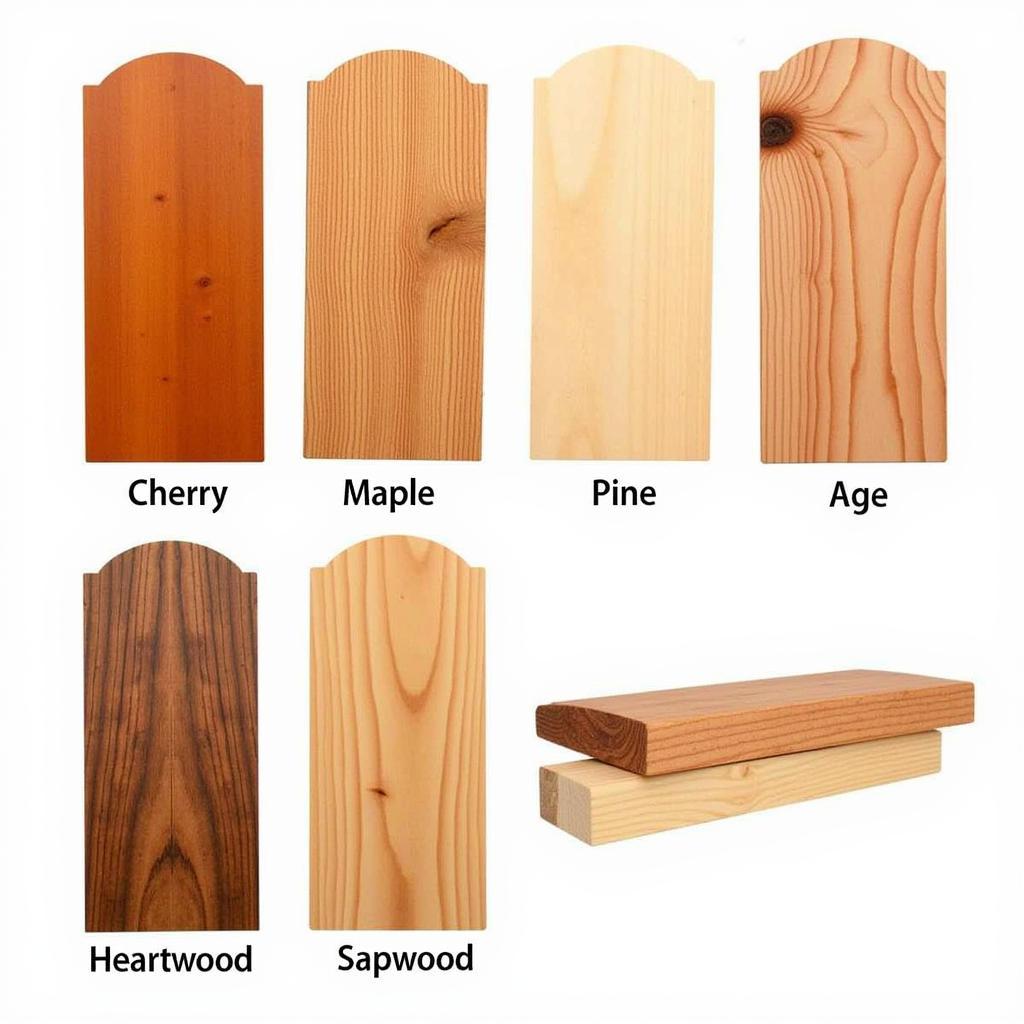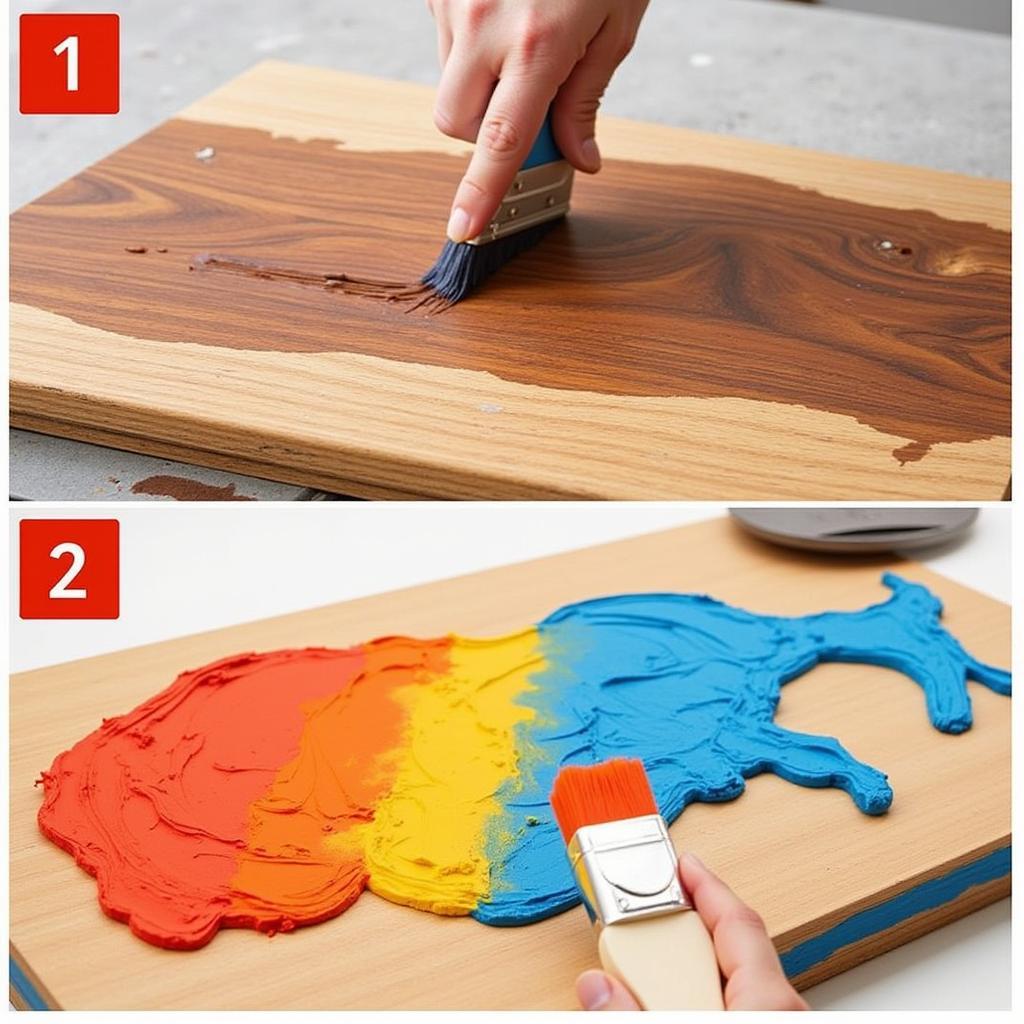Wood, a natural and versatile material, isn’t just one color. It boasts a fascinating spectrum, influenced by species, age, and environmental factors. Understanding this range is crucial for making informed choices in design, construction, and even art. This article dives deep into the captivating world of wood color, exploring the factors that influence its hues and the diverse palette it offers.
As a color expert for Color Box Hanoi, I’m passionate about helping you discover the perfect wood tones for your space. Whether you’re choosing flooring, furniture, or crafting a unique piece, understanding the nuances of wood color is essential. Choosing the right wood color can transform a room, creating warmth, elegance, or a vibrant pop of personality. Let’s embark on this colorful journey together!
After selecting your perfect wood furniture, you might wonder what color walls go with dark wood trim. Finding the right wall color to complement your trim can significantly enhance the overall aesthetic of your room.
Factors Affecting Wood Color
Species
Different tree species produce wood with distinct colors. For instance, cherry wood is known for its rich reddish-brown tones, while maple often exhibits a lighter, creamy hue. Pine, a common softwood, typically ranges from pale yellow to light brown. The species of the tree is the primary determinant of the base color of the wood. This is due to the varying chemical composition and density within different types of trees.
Age and Growth Conditions
As a tree matures, its wood often darkens. Exposure to sunlight and environmental elements also contribute to color changes. For instance, wood exposed to prolonged sunlight can develop a weathered, grayish appearance. Similarly, trees grown in harsh climates might produce denser, darker wood.
Heartwood vs. Sapwood
Within a single tree, the heartwood (the tree’s center) and the sapwood (the outer layers) display different colors. Heartwood is typically darker and more resistant to decay, while sapwood tends to be lighter and more susceptible to insect damage. This distinction is vital when choosing wood for specific projects, impacting both aesthetics and durability.
 Wood Color Variations by Species and Age
Wood Color Variations by Species and Age
Moisture Content
The moisture content of wood can significantly impact its appearance. Wet wood often appears darker than dry wood. As wood dries, its color lightens, revealing the true hues of the species. This is why it’s crucial to let wood acclimate to its environment before finishing or staining.
The Spectrum of Wood Colors
From the palest ivory of holly to the deep ebony of African blackwood, the color possibilities are vast. Some common wood colors include:
- Light Browns: Pine, oak, ash
- Reddish Browns: Cherry, mahogany
- Yellowish Browns: Hickory, birch
- Dark Browns and Blacks: Walnut, ebony
Have you ever wondered, can you paint old teak wood with bright colors? It is indeed possible! With the right preparation and paint, you can transform your teak furniture.
Enhancing and Modifying Wood Color
Stains and Finishes
Wood stains enhance the natural beauty of wood or create entirely new color schemes. Finishes protect the wood and add depth to the color, offering a variety of sheens from matte to high gloss.
Painting Wood
Painting wood opens up a world of color possibilities. However, it’s important to properly prepare the surface and choose the right paint for the specific wood type and application. This ensures a durable and beautiful finish.
 Wood Finishing Techniques: Staining and Painting
Wood Finishing Techniques: Staining and Painting
How Do I Choose the Right Wood Color?
Consider the following when selecting wood color for your project:
- Overall Design Style: Do you prefer a rustic, modern, or traditional aesthetic?
- Existing Color Palette: What colors are already present in the room or space?
- Lighting Conditions: How will natural and artificial light affect the wood’s appearance?
- Function and Durability: Will the wood be exposed to high traffic or moisture?
If you’re considering wood floors, you might be interested in learning about what color furniture goes with dark wood floors. Coordinating furniture with your flooring creates a cohesive and stylish space. Or, you could check out what color furniture for dark wood floors suits your style best.
Conclusion
Understanding What Is The Color Of Wood opens up a world of possibilities for design and creativity. By considering the factors that influence wood color and exploring the diverse range of hues available, you can make informed decisions that enhance your living spaces. From the warm tones of cherry to the cool elegance of maple, the perfect wood color awaits.
FAQ
-
What is the most common wood color? Various shades of brown are the most common wood colors, ranging from light to dark.
-
Can wood change color over time? Yes, wood can change color due to exposure to light, moisture, and other environmental factors.
-
How can I protect the color of my wood furniture? Regular cleaning and the application of appropriate wood finishes can help protect the color and integrity of your wood furniture.
-
What is the difference between heartwood and sapwood color? Heartwood is typically darker than sapwood due to its age and increased density.
-
Can I change the color of wood with stain? Yes, wood stain can enhance or completely change the color of wood.
-
What type of paint should I use on wood? The best type of paint for wood depends on the specific project and the type of wood. Consult a paint specialist for recommendations.
-
How can I determine the species of wood based on its color? While color can be an indicator, it’s not always reliable. Consulting a wood expert is the best way to accurately identify wood species.
Situations involving wood color questions:
- Choosing flooring for a new home
- Selecting furniture to match existing decor
- Identifying antique wood furniture
- Planning a woodworking project
- Restoring a historic building
Further Exploration:
For more information on related topics, you can visit: How far is Glenwood Springs Colorado from Denver Colorado?
Need help with your color choices?
Contact us at Color Box Hanoi!
Phone: 0373298888
Email: [email protected]
Address: 86 Cau Giay, Hanoi
Our customer service team is available 24/7 to assist you.
